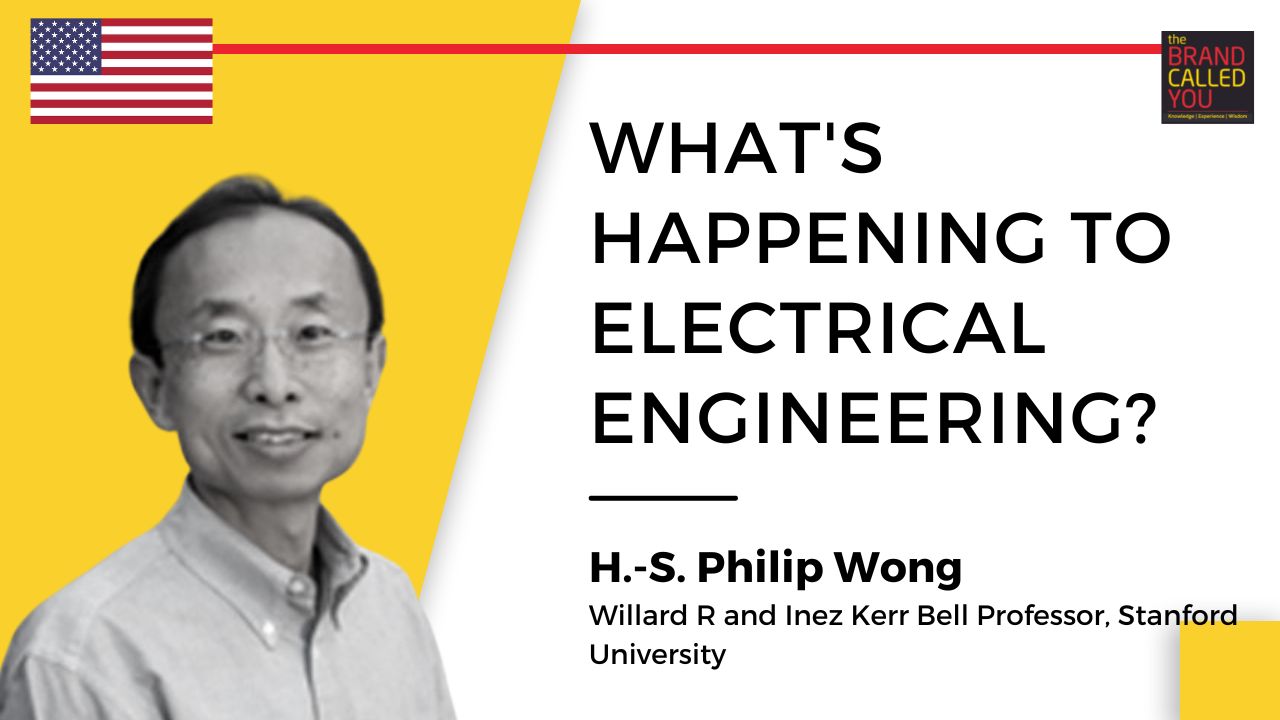H.-S. Philip Wong, Willard R and Inez Kerr Bell Professor, Stanford University
- H.-S. Philip Wong is the Willard R. and Inez Kerr Bell Professor in the School of Engineering at Stanford University.
Podcast
Overview
We have come a long way from when carbon energy was discovered by various scientists to actually using carbonyl technology. Electrical engineering has evolved a lot in the past 50 years, and we still do not know what inventions will change the course of the industry. From the history of Electrical Engineering to what the future has in hold for us, today we talk about the experience and the amazing work Mr. Philip Wong has done in the industry.
00:15- About H.-S. Philip Wong
- H.-S. Philip Wong is the Willard R. and Inez Kerr Bell Professor in the School of Engineering at Stanford University.
- He is the founding faculty co-director of the Stanford SystemX Alliance.
- Director of the Stanford Nanofabrication Facility and Researcher.
- Leadership positions at major multi-university research centers of the National Science Foundation and the Semiconductor Research Corporation.
- Contributed to advanced semiconductor device concepts and their implementation in semiconductor technology.
- His work elucidated the design principles and demonstrated the first nanosheet transistor; Known for his work on carbon nanotube (CNT) electronic
- Early proponent of phase change memory and metal oxide resistive switching memory RRAM.
- Fellow of the IEEE; received the IEEE Electron Devices Society, J.J. Ebers Award; IEEE Andrew S. Grove Award recipient.
05:24 – What are you doing at Stanford?
- He started working on nanotechnology, and nanosciences and translating the discoveries in nanoscience and technology into practical technology.
- Then he worked on Logic technology which is basically transistors that do the computation.
- He also worked on Memory technology in which you need to have electronic devices store data either for the short term or long term.
11:04 – Where do you see Carbon Electronics presently and into the future?
- Carbon energy was discovered in the mid-90s. The first carbon nanotubes were published in 1998.
- At IBM, we still try to assess if carbonation transistors can become a contender for future generations of electronic chips.
- The new technologies are now installed in The Foundry, and they have it running there.
- There are a lot of things to be done to make sure this carbonyl technology is a real contender at the leading edge of the technology.
18:57 – Can you talk a little bit about 2D layered materials?
- This is a new kind of material in which the atoms are arranged in layers which is why they are called 2D layered materials.
- Graphene is a 2D material, and it’s a single sheet of carbon. This means that the layer is thin which means you can get very small transistors and can pack more transistors.
- Smaller transistors also mean that you get better energy efficiency.
- Silicon transistors need to go through a high-temperature fabrication process and the copper wires used in the insulators cannot handle that high temperature. So in the future, we need to pick materials and wires to make devices that can be made at low temperatures.
29:13 – Can you talk about your work with Taiwan semiconductors?
- The process of building a memory device where you store the data is different from that of logic transistors where you do the computation.
- The two exist on different chips due to different factors. Now moving data from one chip to another requires energy which makes the process a bit slow.
- One of the possible solutions to this problem is to build the memory chip on top of the computation chip so that we can reduce the data transmission time.
42:11 – Where do you see analog components contributing to the overall solution paradigm?
- Historically, the advances in device technology have been so rapid that basically what has happened is that you bring something to the market and people figure out what to do with it.
- What has been happening now is that technology is being developed from the top instead of the bottom.
- What that means is that now we decide what we want to do, and then we build on that instead of building something and then finding a use for it.
Profile
- H.-S. Philip Wong is the Willard R. and Inez Kerr Bell Professor in the School of Engineering at Stanford University.
- He is the founding faculty co-director of the Stanford SystemX Alliance.
- Director of the Stanford Nanofabrication Facility and Researcher.
- Leadership positions at major multi-university research centers of the National Science Foundation and the Semiconductor Research Corporation.
- Contributed to advanced semiconductor device concepts and their implementation in semiconductor technology.
- His work elucidated the design principles and demonstrated the first nanosheet transistor; Known for his work on carbon nanotube (CNT) electronic
- Early proponent of phase change memory and metal oxide resistive switching memory RRAM.
- Fellow of the IEEE; received the IEEE Electron Devices Society, J.J. Ebers Award; IEEE Andrew S. Grove Award recipient.


